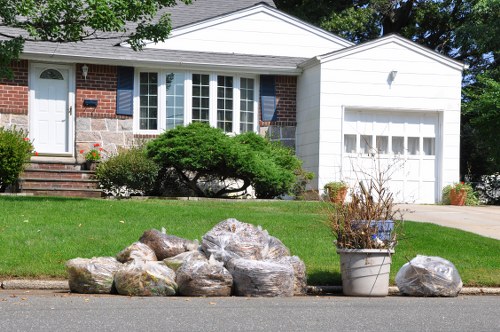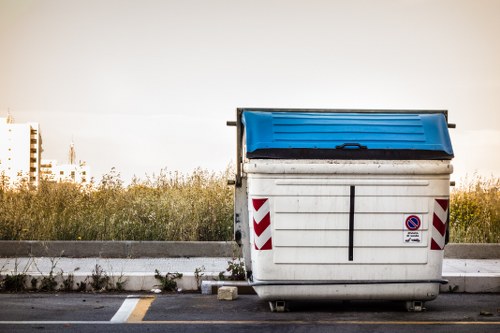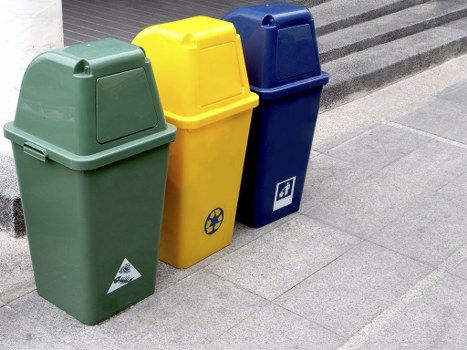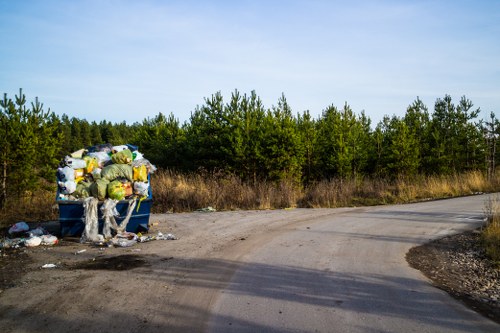Construction Waste Clearance in Staines

When it comes to construction waste clearance in Staines, efficiency and reliability are paramount. Whether you're undertaking a major renovation or a small-scale project, proper waste management ensures a smooth and successful completion. In this article, we delve into the essential aspects of construction waste clearance, offering insights and tips to help you navigate the process seamlessly.
Managing construction debris can be overwhelming, especially if you're unfamiliar with the local regulations and best practices. By understanding the various options available, you can make informed decisions that not only comply with local laws but also contribute to a sustainable environment.
In Staines, several professional services specialize in handling construction waste, providing tailored solutions to meet the unique needs of each project. From initial waste assessment to final disposal, these experts ensure that every step is handled efficiently.

Understanding Construction Waste
Construction waste encompasses a wide range of materials, including concrete, wood, metals, plastics, and more. Proper classification and disposal are crucial to minimize environmental impact and adhere to local regulations.
Different types of construction waste require different disposal methods. For instance, hazardous materials like asbestos or lead must be handled with extreme care, while bulk materials like concrete can often be recycled or repurposed.
Understanding the composition of your construction waste is the first step in developing an effective clearance plan. This knowledge allows you to choose the right disposal methods and ensure compliance with environmental standards.

The Importance of Professional Waste Clearance
Opting for professional construction waste clearance services in Staines offers numerous benefits. Experts have the necessary equipment and expertise to handle large volumes of waste efficiently, reducing the time and effort required on your part.
Additionally, professionals are well-versed in local regulations, ensuring that all waste is disposed of legally and responsibly. This minimizes the risk of fines or other penalties associated with improper waste management.
Moreover, professional services often provide recycling options, helping to reduce the overall environmental footprint of your construction project. By choosing to recycle materials wherever possible, you contribute to a more sustainable future.

Steps Involved in Construction Waste Clearance
Effective waste clearance involves several key steps, each of which plays a vital role in the overall process. Understanding these steps can help you better manage your construction project and ensure timely completion.
- Waste Assessment: Evaluating the types and quantities of waste generated during the project.
- Segregation: Sorting waste into categories such as recyclable, hazardous, and general waste.
- Collection: Gathering the segregated waste for transportation.
- Transportation: Moving the waste to designated disposal or recycling facilities.
- Disposal: Properly disposing of waste in accordance with local regulations.
Each of these steps requires careful planning and execution to ensure that waste clearance is handled effectively and efficiently.

Choosing the Right Waste Clearance Service
With numerous waste clearance services available in Staines, selecting the right one can be challenging. Consider the following factors to make an informed decision:
- Experience: Look for companies with a proven track record in construction waste clearance.
- Licensing and Certification: Ensure that the service is licensed to operate and adheres to all relevant regulations.
- Range of Services: Choose a provider that offers comprehensive services, including waste assessment, segregation, and recycling.
- Customer Reviews: Check testimonials and reviews to gauge the reliability and quality of the service.
- Pricing: Compare quotes from different providers to find a service that fits your budget without compromising on quality.
By carefully evaluating these factors, you can select a waste clearance service that meets your project’s specific needs and ensures a hassle-free experience.
Environmental Benefits of Proper Waste Management
Proper waste management offers significant environmental benefits, contributing to sustainability and reducing the impact of construction activities on the ecosystem.
Recycling materials like metal, wood, and concrete not only conserves natural resources but also reduces the energy consumption associated with producing new materials. This leads to lower greenhouse gas emissions and a smaller carbon footprint.
Moreover, responsible disposal of hazardous waste prevents soil and water contamination, protecting local wildlife and human health. By prioritizing environmentally friendly waste management practices, construction projects in Staines can play a pivotal role in promoting a greener future.
Cost-Effective Waste Clearance Solutions
Investing in professional waste clearance services can be cost-effective in the long run. Efficient waste management minimizes the need for additional resources and reduces the likelihood of project delays caused by accumulated debris.
Furthermore, many waste clearance companies offer recycling options that can offset disposal costs. By repurposing materials, you not only save money but also contribute to sustainability efforts.
Additionally, adhering to local regulations through professional services helps avoid potential fines and legal issues, safeguarding your project’s financial health.
Regulations Governing Construction Waste in Staines
Construction waste clearance in Staines is subject to various local and national regulations designed to ensure environmental protection and public safety.
- Waste Classification: Regulations mandate the proper classification of waste into categories such as general, recyclable, and hazardous.
- Permits and Licensing: Certain types of waste disposal may require specific permits or adherence to licensing standards.
- Transportation Guidelines: Rules governing the transportation of construction waste ensure that materials are moved safely and responsibly.
- Recycling Mandates: Many regulations encourage or require the recycling of specific materials to promote sustainability.
Staying informed about these regulations is essential for compliance and to avoid potential legal consequences. Professional waste clearance services are typically well-versed in these laws, providing peace of mind and ensuring that your project adheres to all necessary guidelines.
Recycling and Reuse Opportunities
Recycling and reusing construction materials offer numerous benefits, both environmentally and economically. By diverting waste from landfills, you contribute to resource conservation and reduce the environmental footprint of your construction project.
Commonly recycled materials include metal, wood, concrete, and certain plastics. These materials can be processed and reused in new construction projects, minimizing the need for virgin resources.
Additionally, many waste clearance companies in Staines facilitate the recycling process, making it easier for you to incorporate sustainable practices into your project. Embracing recycling and reuse not only benefits the environment but also enhances your project’s reputation as an environmentally responsible endeavor.
How to Prepare for Construction Waste Clearance
Proper preparation is key to ensuring an efficient waste clearance process. Here are some steps to help you get started:
- Inventory Your Waste: Conduct a thorough inventory to identify the types and quantities of waste generated.
- Plan Segregation: Develop a segregation plan to sort waste into appropriate categories for disposal or recycling.
- Schedule Collections: Coordinate with your waste clearance service to establish a collection schedule that aligns with your project timeline.
- Provide Access: Ensure that collection points are easily accessible for waste removal vehicles and equipment.
- Educate Your Team: Inform your construction team about waste management protocols to ensure consistent adherence throughout the project.
By taking these preparatory steps, you streamline the waste clearance process, reducing disruptions and enhancing overall project efficiency.
Innovative Waste Clearance Technologies
Advancements in technology have revolutionized the construction waste clearance industry, offering more efficient and sustainable solutions.
Modern machinery and software enable precise waste tracking and management, ensuring that materials are handled correctly and disposed of responsibly. Automated sorting systems enhance the efficiency of segregating recyclable and non-recyclable materials, reducing manual labor and minimizing errors.
Additionally, innovations such as mobile apps allow for real-time communication between construction sites and waste clearance services, facilitating timely collections and reducing delays. Embracing these technologies leads to more effective waste management and contributes to the overall success of construction projects in Staines.
Case Studies: Successful Waste Clearance Projects in Staines
Examining successful projects can provide valuable insights into effective construction waste clearance strategies. Here are a few notable examples from Staines:
- Residential Complex Renovation: A multi-unit residential renovation project successfully implemented a comprehensive waste clearance plan, involving regular collections and extensive recycling efforts. This approach minimized disruptions and ensured timely project completion.
- Commercial Office Building Construction: A new office building construction incorporated advanced waste tracking technologies, enhancing the efficiency of waste segregation and disposal. The project achieved significant cost savings through effective recycling practices.
- Public Infrastructure Development: A public infrastructure project in Staines utilized professional waste clearance services to manage large volumes of debris generated during construction. The partnership ensured compliance with environmental regulations and contributed to a clean and sustainable development.
These case studies highlight the importance of strategic waste management and the benefits of professional clearance services in achieving successful construction outcomes.
Common Challenges in Waste Clearance and How to Overcome Them
Despite the best efforts, construction waste clearance projects can encounter various challenges. Recognizing these obstacles and implementing effective solutions can help mitigate their impact:
- Volume Management: Large volumes of waste can overwhelm disposal services. Planning phased collections and coordinating closely with your provider can alleviate this issue.
- Segregation Errors: Improper sorting can lead to contaminated recyclables, reducing their value. Training your team and using clear labeling systems can enhance segregation accuracy.
- Regulatory Compliance: Navigating complex regulations can be daunting. Partnering with knowledgeable waste clearance services ensures adherence to all legal requirements.
- Cost Constraints: Budget limitations may hinder comprehensive waste management. Exploring cost-effective solutions such as increased recycling can help manage expenses.
- Space Limitations: Limited space for waste storage can cause operational delays. Efficient on-site organization and timely collections can prevent space-related issues.
Addressing these challenges proactively fosters a smoother waste clearance process and enhances the overall success of your construction project.
Future Trends in Construction Waste Clearance
The construction waste clearance industry is continually evolving, with emerging trends aimed at enhancing efficiency and sustainability.
One notable trend is the increased emphasis on circular economy principles, where materials are reused and recycled to the maximum extent possible. This approach not only reduces waste but also fosters innovation in material usage.
Another trend is the integration of digital technologies, such as Internet of Things (IoT) devices and advanced data analytics, to optimize waste management processes. These technologies enable real-time monitoring and more accurate forecasting of waste generation, leading to more efficient clearance operations.
Additionally, there is a growing focus on eco-friendly disposal methods and the development of new recycling techniques, further contributing to the sustainability of construction projects.
Benefits of Partnering with Local Staines Providers
Collaborating with local waste clearance providers in Staines offers several advantages over national or distant services.
Local companies have a better understanding of the regional regulations and specific challenges related to construction waste in Staines. This localized expertise ensures that waste clearance is handled efficiently and in compliance with all relevant laws.
Moreover, local providers often offer more personalized services and timely responses, facilitating better communication and coordination throughout the project. Supporting local businesses also contributes to the community’s economic growth and sustainability.
Conclusion
Effective construction waste clearance in Staines is integral to the success of any construction project. By partnering with professional waste management services, adhering to local regulations, and embracing sustainable practices, you can ensure that your project is completed smoothly and responsibly.
From thorough waste assessment and strategic segregation to efficient disposal and recycling, every step in the waste clearance process plays a crucial role in promoting environmental sustainability and project efficiency.
Don't let construction debris hinder your project's progress. Contact us today to learn more about our expert construction waste clearance services in Staines and take the first step towards a cleaner, greener construction process.
FAQs about Construction Waste Clearance in Staines
1. What types of construction waste can be recycled?
Materials such as metal, wood, concrete, and certain plastics can typically be recycled.
2. How do I choose the right waste clearance service?
Consider factors like experience, licensing, range of services, customer reviews, and pricing to select a suitable provider.
3. Are there any regulations I need to be aware of?
Yes, construction waste clearance in Staines is governed by local and national regulations concerning waste classification, disposal methods, and recycling mandates.
4. How can I reduce construction waste?
Implementing efficient waste management practices, such as accurate planning, material reuse, and comprehensive recycling, can significantly reduce waste.
5. What are the costs involved in construction waste clearance?
Costs vary based on the volume of waste, types of materials, and specific services required. It's advisable to obtain quotes from multiple providers to find a solution that fits your budget.
Take Action Now!
Ready to streamline your construction project with efficient waste management? Book your service now and experience the difference professional waste clearance can make.